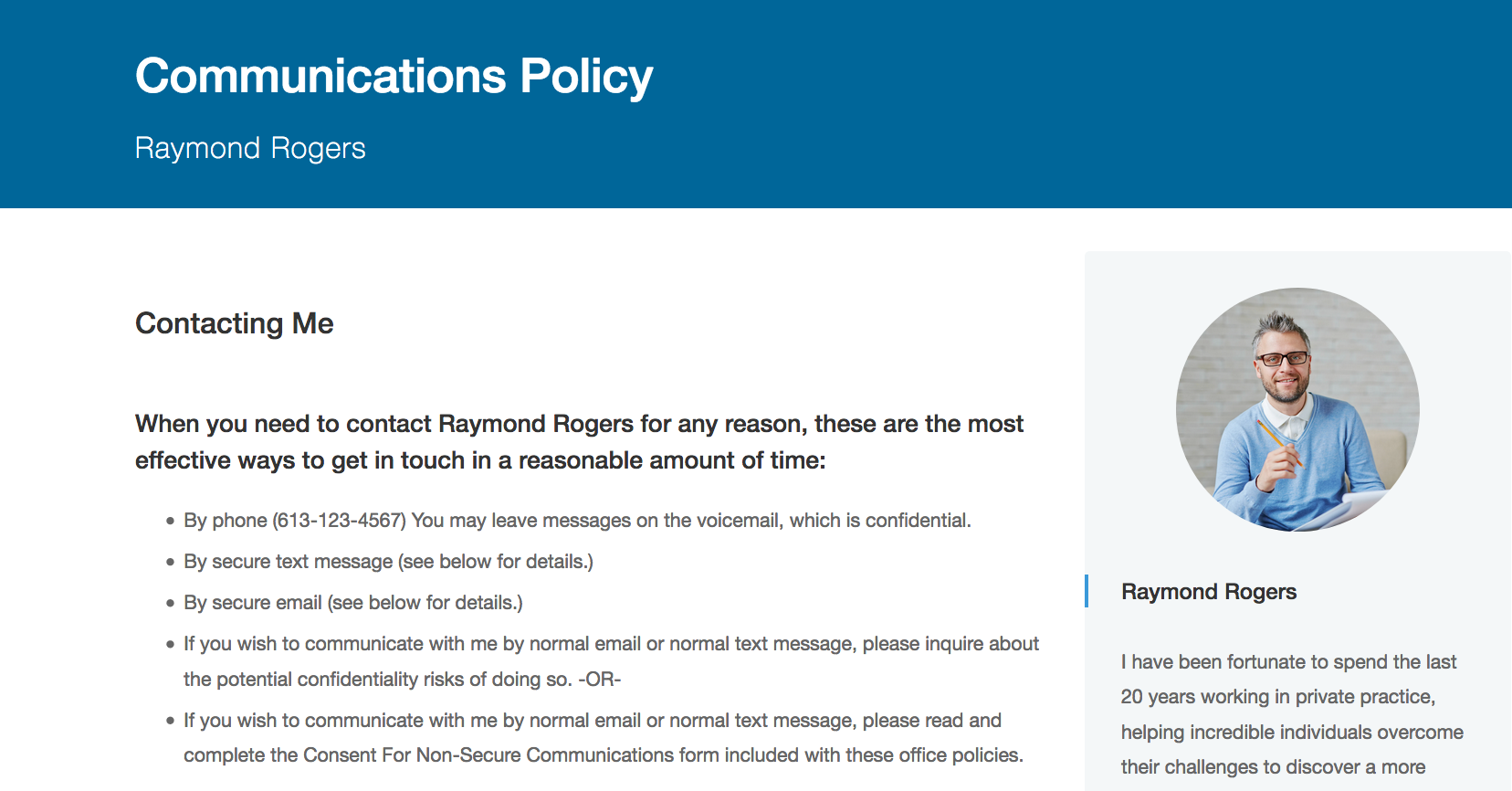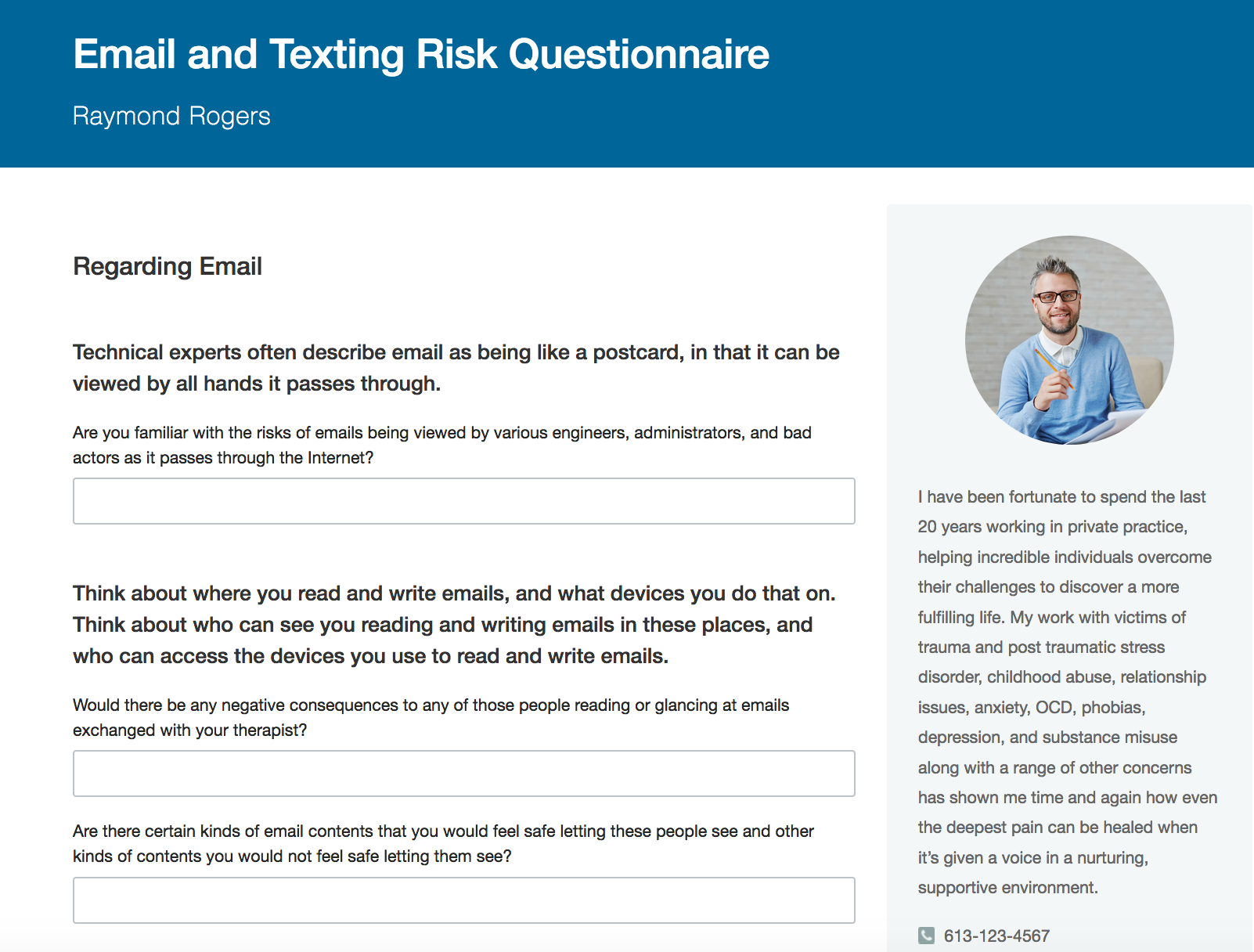
One of the most important agreements to establish with a client upfront is how you’ll communicate. Especially now when many practitioners are making the rapid transition to telehealth so they can continue to care for their clients.
As more people seek care online, it’s more important than ever that practitioners state in clear terms what clients can expect when it comes to communication.
Today, we’re going to look at a few forms that help explain your preferences as a practitioner, educate your clients about different forms of communication and their risks, and get their consent to the decisions you both decide upon. Samples of these forms are available when you sign up for a free account at Person Centered Tech, a Hushmail partner.
For digital versions of the forms, you can build them yourself with our drag-and-drop form builder in Hush Secure Forms. We’ve even built one of the forms for you that you can access if you sign up for a free Person Centered Tech seminar about using secure email. We’ll tell you more about that later on in the post.
Establishing clear communication guidelines for your clients will make it easier for them to receive vital care in the way that’s most comfortable for them. And you.
1. Communications policy
This form explains in clear terms how a client can expect to communicate with you. It covers the preferred method of communication (i.e., secure email, secure text message, secure contact form on your website, etc.), an estimated response time, contact information in case of an emergency, among other details that reassure a client of their ability to get in touch with you, while also establishing boundaries that benefit both you and your client.
The communications policy is a good place to include anything you need your clients to understand about communicating with you. Stating preferences and boundaries upfront is necessary for avoiding misunderstandings later in the relationship.

The above image reflects a sample of what the form might look like if built in Hush Secure Forms. Sign up for a free Person Centered Tech account to receive a template for this form.
2. Email and texting risk questionnaire
This form helps clients make an informed decision about accepting or not accepting the risks associated with email and text messaging. The risks will vary depending on the technology and software you and your clients use, as the security of different tools can vary dramatically. This questionnaire gives you and your client the opportunity to discuss what will and won’t be used, how, and to what extent.
The form also covers risks other than security risks. For example, there is a risk associated with misunderstood expectations of response time. The questionnaire asks the client to consider how they would react if their practitioner’s response time doesn’t match what the client is typically used to.

The above image reflects a sample of what the form might look like if built in Hush Secure Forms. Sign up for a free Person Centered Tech account to receive a template for this form.
3. Request for non-secure communications
Secure, encrypted email is always the preferred choice when messages between a practitioner and client contain sensitive information. However, even after discussing the risks, you might find that some clients still prefer a non-secure means of communication. This form gives clients the opportunity to choose to use or not use non-secure communications, states that they have been informed of the risks, and requests the client’s signature accepting those risks. Under HIPAA, clients have a right to receive non-secure communications. However, the onus is on the practitioner to have the client opt out of secure email and text messaging options, before communicating with them in a non-secure manner.
It’s important to note that this request itself needs to be secure until the client opts out.

The above image reflects a sample of the form template built in Hush Secure Forms. For a free Request for non-secure communications template that you can use with Hush Secure Forms, sign up for Person Centered Tech’s self-study seminar Email in Mental Health Practice: Legal-Ethical, Clinical and Risk Management Issues.
Are you ready to start building secure web forms?

|
One of the most important agreements to establish with a client is how you’ll communicate. Especially now when many practitioners are making the rapid transition to telehealth. These three essential forms can help you set your communication expectations: a communications policy, an email and texting risk questionnaire, and a request for non-secure communications.
|